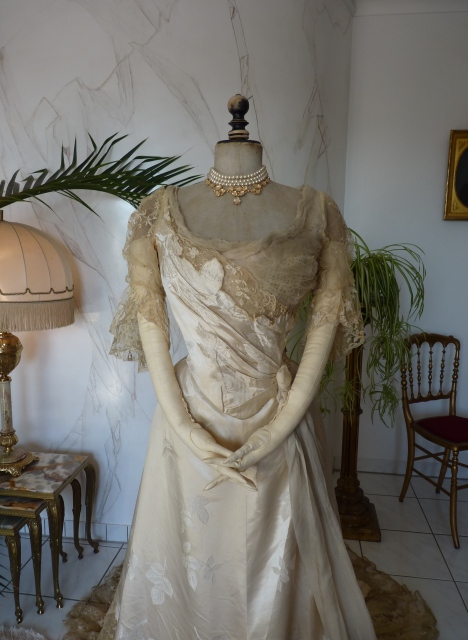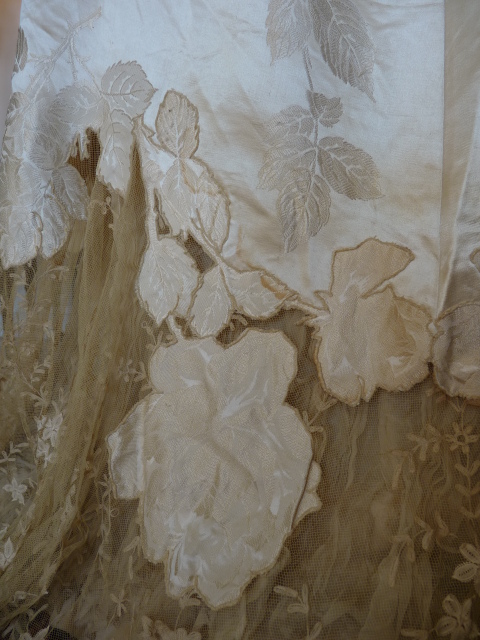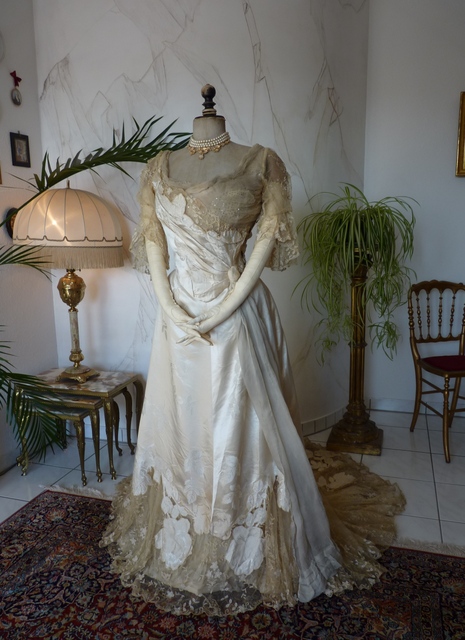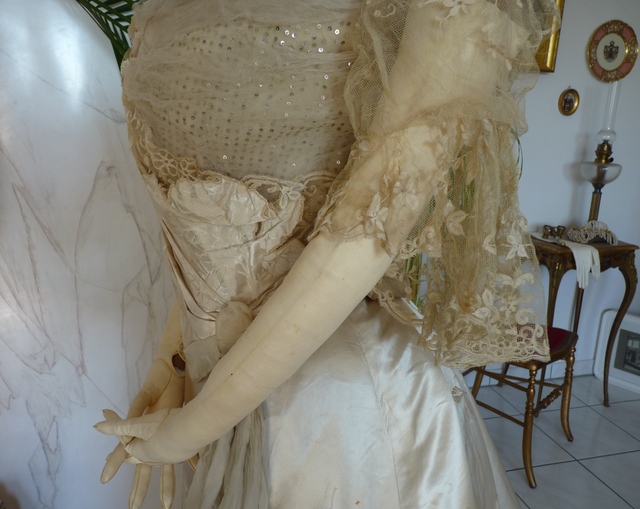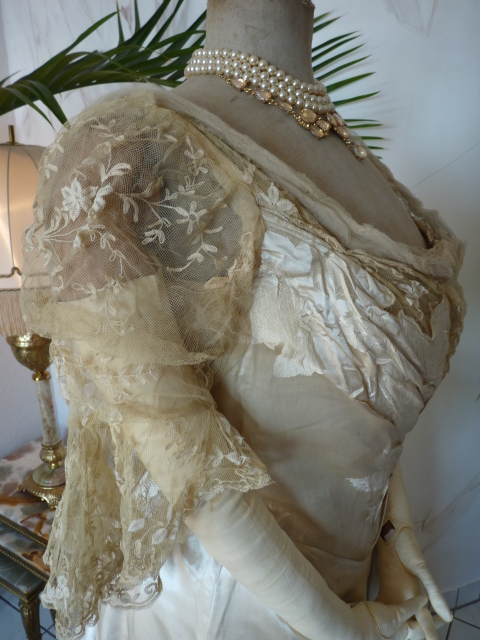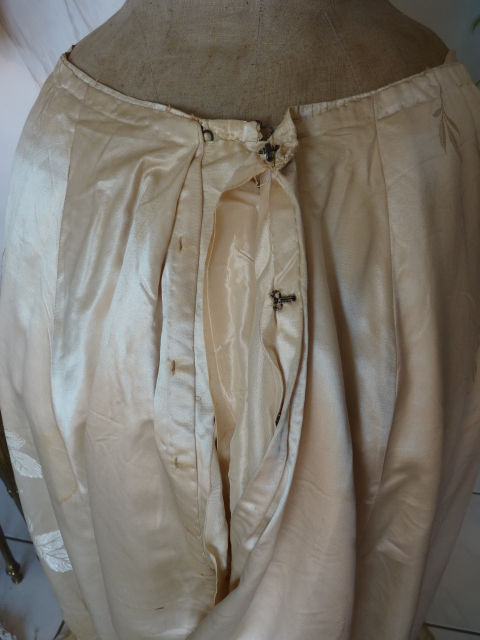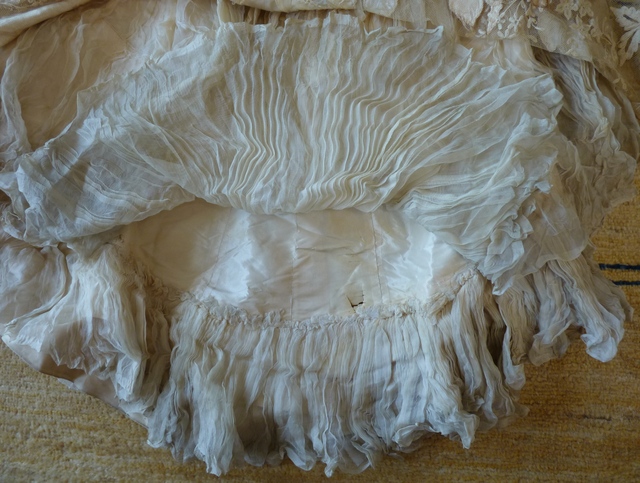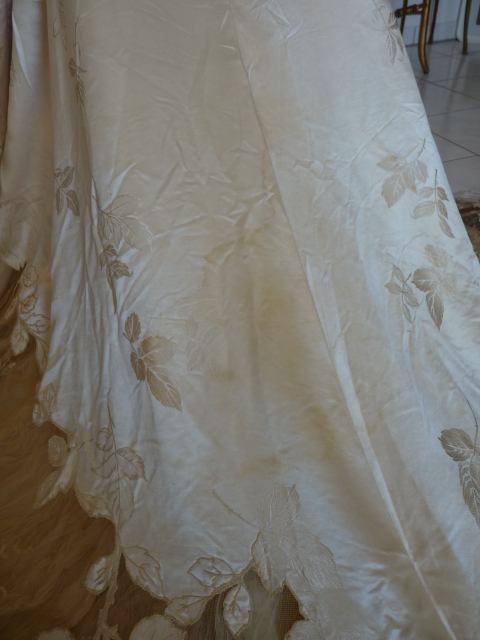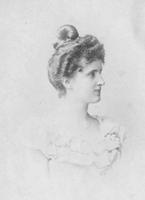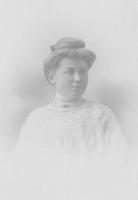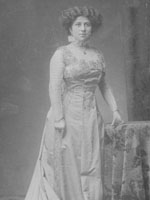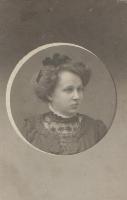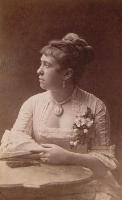- early
- Day Dress, ca. 1862
- Mmes CONSTANCE & HERMENCE Dinner Dress, Paris, ca. 1888
- GERSON & Co. Court Dress, Princely House of Wied, Berlin, ca. 1888
- Day Dress, ca. 1887
- Day Dress, ca. 1859
- Wedding Dress, ca. 1867
- MISS ROBINSON Visiting Gown, ca. 1879
- Visiting Gown, England, ca. 1859
- Romantic Period Evening Dress, England, ca. 1846
- Chantilly-Lace Jacket, ca. 1860
- MISS DAVIES Princess Style Wedding Dress, England, ca. 1878
- Mauve Evening Dress, England, ca. 1860
- Biedermeier Evening Dress, Austria, ca. 1845
- Rococo Bodice, England, ca. 1780
- LORIOT & CIE Velvet Dolman, Paris, ca. 1885
- Biedermeier Dress, Germany, ca. 1824
- Biedermeier Dress, Germany, ca. 1830
- Royal Blue Evening and Afternoon Dress, England, ca. 1860
- Caraco à l’Anglaise, 1760s
- Burgundy Evening and Afternoon Dress, England, ca. 1880
- Travel Dress, America, ca. 1869
- Polonaise Style Travel Dress, England, ca. 1875
- Afternoon Dress, England, ca. 1862
- Travel Dress, America, ca. 1879
- Wedding Dress, America, ca. 1879
- Tulle Jacket, 1870s
- Boudoir Gown, England, ca. 1870
- Regency Dress, England, ca. 1815
- Biedermeier Bodice, Germany, ca. 1840
- ARNOLD CONSTABLE & Co. Dolman, New York, 1880s
- Wedding Gown, ca. 1878
- Travel Coat and Bag, America, ca. 1878
- Bodice, 18. Century
- Empire Spencer, ca. 1805
- A.M. VAIL Wedding Dress, America, ca. 1879
- Empire Silk Reception Dress, France, ca 1805-1810
- Cinnamon Silk Dressing Gown, America, ca. 1870
- Printed Wool Dressing Gown, America, ca. 1866
- Reception Gown, England, ca. 1866
- Embroidered Lace Bustle Overgown, 1880s
- Spencer in Directoire Style, France, ca. 1795
- SAVARRE Reception Gown, Paris, ca. 1885
- Wool Cape, ca. 1866
- Reception Gown, America, ca. 1866
- Biedermeier Stomacher, Germany, ca. 1840
- Rococo Corset, Italy, ca. 1740
- Jumps or Waistcoat, ca. 1795-1800
- WORTH Jacket, Paris, ca. 1889
- Quilted Spencer, ca. 1855
- Paper Silk Reception Gown, ca. 1884
- Mother & Daughter Afternoon Dresses, 1840s
- Dolman, France, ca. 1880
- Ball Gown with Evening Bag, France, ca. 1865
- EMILE PINGAT Bustle Silk Gown, ca. 1878
- French Gauze Gown, Madame Hyde de Neuville, ca. 1828
- Rococo Stomacher, 1770s
- Paisley Silk Dolman, ca. 1880
- CONNELL Velvet Dolman, Chicago, ca. 1888
- Spencer Jacket, ca. 1810
- Bustle Gown with matching Cabinet Card, ca.1880
- Civil War Reception Gown, ca. 1865
- Ball Gown, New York, ca. 1880
- Ivory Satin Wedding Bustle Gown, ca. 1879
- Burgundy Princess Style Wedding Gown, ca. 1878
- Regency Cotton Gown, ca. 1815
- Grand Wedding Gown from Paris, 1883
- Elegant Jacket, ca. 1886
- Empire Pelisse Coat, ca. 1820
- Wedding Ensemble, ca. 1874
- Bustle Ball Gown, England, ca. 1876
- Mourning Gown, ca. 1879
- French Travelling Dress, ca. 1879
- Visiting or Reception Gown, France, ca. 1856
- MAZILLE French Festive Dress, ca. 1884
- WORTH Cape, Paris, 1880s
- Romantic Period Wedding Gown, Vest and Slippers, ca. 1835
- Riding Habit and Riding Hat, 1870s
- Romantic Period Visiting Gown, ca. 1837
- Empire Corselet and Dress, ca. 1805
- Empire Court Dress, ca. 1805
- Empire Pelisse Coat, ca. 1810
- Spencer, Germany, ca. 1820
- Bustle Ball Gown, ca. 1886-1888
- Lady’s Silk Jacket, ca. 1750-1760
- Silk Dress, ca. 1800-1805
- Romantic Period Beige Silk Taffeta Dress, ca. 1844
- Romantic Period Printed Wool Gown, ca. 1839
- Robe á la Française, France, ca. 1770
- BLACKWOOD Evening Bustle Gown, ca. 1884
- Robe á la Française, France, ca. 1770-1775
- Robe á la Française, France, ca. 1760
- Chintz Hooded Cape, France, ca. 1790
- Wedding Gown, ca. 1867
- Robe á l'Anglaise, Spitalfields Silk, ca. 1780
- Royal Ball Gown, ca. 1859
- EMILE PINGAT Paisley Dolman, ca. 1880
- Bustled Silk Dress, ca. 1874
- Bustle Gown, Empress Eugénie, ca. 1876
- Court Dress, ca. 1720-1760
- Gorgeous Evening Gown, ca. 1889
- Princess Style Reception Gown, ca. 1878
- Robe á la Française, United Kingdom, ca. 1770
- WORTH Ball Gown Bodice, Paris, ca. 1869
- Romantic Period Court Dress, England, ca. 1838
- Striped Evening and Day Dress, ca. 1860-1865
- Ball Gown, France, ca. 1864
- DUVAL & EAGAN Evening Dress, New York, ca. 1889
- Romantic Period Ball Gown, Lady Jane Erskine, ca. 1837
- Swansdown Feather Palatine, ca. 1820
- Magnificent Bustle Ball Gown, ca. 1889
- BONDEUX SOEURS Gown with Day and Evening Bodice, Paris, ca. 1889
- Rococo Pockets, ca. 1740
- Rococo Robe Manteau à la Française, France, ca. 1770-1775
- Rococo Stays, France, ca. 1720
- Crinoline Ball Gown, France, ca. 1859
- Ball Gown, France, ca. 1855
- Robe á L'Anglaise, British, ca. 1770
- Rococo Stays, Germany, ca. 1740
- Goldenrod Bustle Ball Gown, ca. 1882
- Spencer for a Riding or Amazon Dress "á la Hussarde", ca. 1808
- Rococo Robe Manteau à la Française, France, ca. 1770
- Regency Silk Dress, England, ca. 1818
- Rococo Caraco, ca. 1730
- Independence Day Ball Gown, ca. 1866
- Romantic Period Evening Gown, Scotland, ca. 1838
- Ball Gown, France, ca. 1864
- 1890-1900
- Black Lace Day Dress, ca. 1894
- Reception Gown, England, ca. 1896
- Reception or Dinner Dress, ca. 1896
- Bicycle Ensemble, America, ca. 1898
- Wedding Dress, America, ca. 1895
- Silk Satin Dinner Dress, America, ca. 1895
- Lingerie Dress, America, ca. 1898
- White Tea Dress, ca. 1900
- AU BON MARCHÉ Cape, Paris, ca. 1898
- Elegant Day Dress, ca. 1900
- Child Bride Wedding Dress, America, ca. 1896
- JAY'S Evening Dress, London, ca. 1900
- Hunting Ensemble, England, ca. 1890
- Afternoon Dress, ca. 1896
- J. SAGMEISTER Vest, St. Petersburg, ca. 1890
- Evening or Dinner Dress, ca. 1892
- Dressing Gown with Paisley Pattern, England, ca. 1895
- Afternoon Dress, America, ca. 1890
- Dinner Dress, America, ca. 1898
- PAQUIN Coat-Cape, Paris, ca. 1898
- Pink Tea Dress, ca. 1899
- Maternity Dress, America, ca. 1890
- Evening Dress, ca. 1893
- Art Nouveau Wedding Dress, ca. 1895
- MARIE ROBEL Promenade Gown, Dresden, ca. 1898
- WORTH attributed Opera Coat, ca. 1896
- LARUE Ball Gown, Bordeaux-Biarritz, ca. 1898
- Red and black striped society dress, America, ca. 1895
- Ball Gown Bodice, ca. 1898
- MADAME PERCY Visiting Gown, ca. 1889
- Evening Gown, New York, ca. 1895
- Stunning Evening or Reception Gown, ca. 1892
- JEANNE HALLÉE Evening Gown, Paris, ca. 1899
- WORTH Venetian Ball Gown for Mrs. J.P. Morgan, Paris, ca. 1898
- Victorian Wedding Ensemble, ca. 1895
- CHEVALLIER-LUZARDI Reception Gown, Geneva, ca. 1898
- WORTH Black Evening Dress, ca. 1898
- WORTH Evening Dress, Paris, ca. 1898
- HENRIETTE TISSIER Evening Gown, Paris, ca. 1895
- Fanciful Victorian Gown, ca. 1899
- ALEX SCOTT Ladies Side Saddle Habit, ca. 1895
- Maison ROUFF Wedding Gown, Paris, ca. 1896
- JEANNE HALLÉE Evening Gown, Paris, ca. 1895
- DELBARRE Evening Gown, Elisabeth Schwarzkopf, ca. 1897
- Mrs. CUTTLE Evening Gown, Bradford, ca. 1895
- DARLINGTON RUNK Evening Dress, Philadelphia, ca. 1895
- MAISON LIPMANN Reception or Society Gown, ca. 1896
- WORTH Evening Gown, Paris ca. 1898
- WORTH Evening or Ball Gown, Paris, ca. 1894
- LOUISE BORGES Ball Gown, New York, ca. 1900
- ALTMAN & Co. Ball Gown, New York, ca. 1894
- Mme. E. ROUSSET Society Dress, Paris, ca. 1899
- MAISON H. THIRION Reception Gown, Paris, ca. 1895
- LEROUX Ball Gown, New York, ca. 1890
- MADAME CUPER Silk Jacket, Paris, ca. 1895
- WORTH Boudoir Robe, Paris, ca. 1900
- Dinner Dress, ca. 1892
- WORTH Bodice, Paris, ca. 1895
- Bicycle Jacket, England, ca. 1895
- 1900-1919
- LINKER & Cie. Walking Dress, Paris, ca. 1910
- Walking Ensemble, Germany, ca. 1909
- JULES BISTER Day Dress, Berlin, ca. 1904
- MARIE SCHNELL Evening Wardrobe of a Princess, Dresden, ca. 1912
- Wedding Dress, ca. 1915
- Summer Dress, ca. 1903
- Ball Gown, ca. 1904
- SYKES Tee Dress, London, ca. 1904
- Walking Ensemble, Princess Viktoria Luise of Prussia, ca. 1912
- WORTH Evening Coat, Paris, ca. 1901
- Downton Abbey: Dame Maggie Smith's costume as Violet, Dowager Countess of Grantham, 2010
- Linen Walking Dress, England, ca. 1909
- Opera Coat, America, ca. 1904
- Velvet Coat, America, ca. 1915
- STRAWBRIDGE & CLOTHIER Coat, Philadelphia, ca. 1912
- A. DEFENBURG & Co. Coat, Philadelphia, ca. 1906
- Coat, ca. 1904
- Lingerie Dress, America, ca. 1904
- DE BAUN Soutache Walking Ensemble, New York, ca. 1908
- Pink Satin Evening Dress, ca. 1912
- Chantilly & Sky Blue Satin Evening Dress, ca. 1914
- Evening Dress, England, ca. 1918
- GRANT BROS. Hobble Skirt Dress, Croydon, ca. 1913
- GRANT BROS. Evening Dress, Croydon, ca. 1912
- GRANT BROS. Reception Dress, Croydon, ca. 1912
- Lingerie Dress, ca. 1908
- Embroidered Summer Dress, ca. 1915
- Battenberg Lace Coat, ca. 1904
- MADAME AGNES UNWIN Summer Dress, London, ca. 1911
- SHERWOOD Afternoon Dress, New York, ca. 1902
- Walking Dress, ca. 1910
- Pale Pink Irish Lace Jacket, ca. 1908
- LUCILE Wedding Dress, Chicago, ca. 1915
- Day Ensemble, ca. 1912
- Summer Dress, ca. 1913
- HUTZLER BROTHERS & Co. Jacket, Baltimore, ca. 1918
- BERKELBACH Wedding Dress, ca. 1910
- HOPE & Co. Wedding Dress, New York, ca. 1913
- Cashmere Wedding Coat, ca. 1908
- DRECOLL Walking Jacket, Paris & Vienna, ca. 1910
- Art Nouveau Reception Dress, ca. 1906
- GROSSI & GIANSANDI Walking Ensemble, Rome, ca. 1904
- Wedding Dress, England, ca. 1901
- Striped Walking Dress, ca. 1912
- Irish Crochet Long Jacket, England, ca. 1908
- Winter Coat, ca. 1908
- Embroidered Linen Afternoon Dress, ca. 1910
- Linen Day Dress, America, ca. 1906
- Lace Jacket, ca. 1906
- White Summer Coat, ca. 1907
- Beach Dress, ca. 1914
- Irish Crochet Lace Blouse, ca. 1901
- Bolero Walking Ensemble, France, ca. 1904
- Walking Ensemble, France, ca. 1910
- PLUYM Titanic Era Walking Dress, Washington, dated April 1912
- Exceptional Evening Gown, Paris, ca. 1904
- Walking Ensemble, Hole Lace, ca. 1907
- Cream Wool Walking Dress, ca. 1909
- PARIS HOUSE Coat, Luton, ca. 1912
- Travel Duster Coat, America, ca. 1910
- Exceptional Blouse, ca. 1901
- Irish Crochet Blouse, ca. 1909
- Tea Gown, ca. 1908
- JAQUES DOUCET Blouse, Paris, ca. 1910
- MACHERET Society Dress, New York & Paris, ca. 1901
- Ermine and lace Coat, Marija Pawlowna Romanowa, ca. 1908
- HUGHES & STARNES Wedding Dress, dated 1915
- Elegant Walking Ensemble, ca. 1906
- NELMARIE Evening Gown, London, ca. 1913
- LAFFERIÈRE Evening Gown, Paris, ca. 1908
- Black Lace Blouse, ca. 1909
- Art Nouveau Black Beaded Silk Evening Gown, ca. 1912
- Art Nouveau Purple Silk Dinner Gown, ca. 1912
- Art Nouveau Green Silk Evening Gown, ca. 1910
- Elegant Evening Gown, ca. 1912
- Elegant Black Evening Gown, ca. 1909
- Art Nouveau Brown Cashmere Dress, ca. 1910
- Elegant Ball Gown, Sheffield, ca. 1901
- Fuchsia Silk Velvet Opera Cape, ca. 1916
- Extraordinary Reception Gown, ca. 1901
- Grey Silk Chiffon Reception Gown, ca. 1909
- Stunning Ball Gown, ca. 1904
- Exquisite Belle Epoque Wedding Gown, ca. 1909
- Art Nouveau Mauve Silk Afternoon or Reception Gown, ca. 1910
- Art Nouveau Navy Silk Afternoon or Reception Gown, ca. 1910
- Majestic Ball Gown, ca. 1909
- Opulent Era Day and Evening Ensemble, House of Beer, dated 1901
- Walking or Promenade Dress, ca. 1905
- Party Dress, ca. 1917
- Exquisite Summer Dress, Paris Label, ca. 1901
- Summerly Evening Gown in Empire Style, London, ca. 1909
- Promenade Dress, ca. 1904
- Titanic Era Ball Gown, Strasbourg, ca. 1912
- Silk Satin Wedding Gown with Train, ca. 1913
- Evening Dress, Renee Soeurs, ca. 1919
- Blue Wild Silk Walking Suit, New York, ca. 1906
- Edwardian Tennis Dress, ca. 1910
- Wedding or Bridal Gown, ca 1913
- Visiting Ensemble, ca. 1901
- Titanic Era Wedding Dress, ca. 1912
- FARQUHARSON & WHEELOCK Evening Gown, New York, ca. 1913
- WORTH Evening Dress, Paris, ca. 1910
- Titanic Era Evening Gown with Large Rose, ca. 1912
- Black Linen Walking Dress, ca. 1901
- CARLIER “Butterfly” Ball Gown, ca. 1901
- Battenburg Lace Reception Gown, ca. 1901
- "Chestnut" Coat, ca. 1905
- White Satin Wedding Gown, ca. 1909
- Orange Silk Brocade Reception Gown, ca. 1905
- LILLY Art Nouveau Reception Gown, ca. 1901
- LEONARD & O'NEILL Evening Gown, ca. 1912
- WORTH Evening Gown, Paris, ca. 1906
- Reception Gown, Battenburg Lace, ca. 1904
- DEMPSEY Princess Lace Wedding Gown, ca. 1908
- Art Nouveau Gala or Evening Gown with Coat, ca. 1909
- Fabulous Reception Gown, ca. 1904
- Irish Crochet Dress, ca. 1904
- Walking Dress, dated April 1912
- REDFERN Afternoon Dress, ca. 1901
- MAURICE MAYER Ball Gown, Paris, ca. 1913
- PAQUIN Coat, dated Summer 1919
- WORTH Evening or Opera Coat, Paris, ca. 1904
- Afternoon or Reception-Gown, designed by Shogren Sisters, ca. 1901
- MME. HAVET & MON. AGNES Tea Gown, Paris, ca. 1912
- JEANNE HALLEÈ Evening Dress, ca. 1912
- ALTMAN & Co. Battenburg Lace Reception Gown, Paris & New York, ca. 1904
- KAYSER Society Dress, Lyon, ca. 1908
- Airy Society Dress, ca. 1901
- GUSTAVE BEER Reception and Society Dress, ca. 1906
- WORTH Silk Jacket, Paris, ca. 1908
- BUZENET Ball Gown, Paris, ca. 1903
- JEANNE HALLEÈ Evening Dress, ca. 1905
- M.A. TANSLEY Society Dress, Springfield, ca. 1904
- MONTAGUE SMYTH Riding Habit, London, ca. 1914
- P. LAMERS Dinner Dress, Hamburg, ca. 1910
- GUSTAV BEER Evening Gown, Paris, ca. 1905
- ALTMAN & Co. Evening Dress, Paris and New York, ca. 1912
- MARY CUMMINGS Summer Dress, Louisville, ca. 1918
- Mme. ALBERT Evening Dress, Chicago, ca. 1912
- SILKEHUSET Dinner or Reception Gown, Oslo, ca. 1906
- DRECOLL Evening Dress, ca. 1906
- WORTH Walking Suit, Paris, ca. 1908
- PAQUIN "Rose Dress", Paris & London, ca. 1908
- 1920s
- Wedding Dress, England, ca. 1927
- Velvet Jacket, England, ca. 1928
- Ladies Kimono, ca. 1925
- Duster, linen, 1920s
- Duster, wild silk, 1920s
- Embroidered Lamé Evening Dress, America, ca. 1926
- Overdress with Egyptian Motifs "Horus Eye, Uto and Pharaoh", ca. 1923
- Flapper Evening Dress, Spain, ca. 1925
- Embroidered Flapper Dress, France, ca. 1925
- Bone Aplications Afternoon Dress, America, ca. 1922
- Wedding Dress, America, ca. 1925
- Embroidered Flapper Evening Dress, ca. 1926
- Day Dress, ca. 1921
- Day Dress, ca. 1922
- Evening Dress, Rhinestone Embellishment, ca. 1928
- Tea Dress, ca. 1926
- Velvet Day Dress, ca. 1923
- Yellow Dance Dress, ca. 1926
- Egyptian Applique Coat, ca. 1924
- Evening Dress, England, ca. 1924
- Party Dress, France, ca. 1924
- White Evening Flapper Dress, France, 1920s
- Beaded and Sequined Net Dress, 1920s
- Charming Flapper Dress, ca. 1925
- Cream Satin Wedding Dress, 1920s
- WORTH Dévoré Velvet Evening Dress, Paris, ca. 1926
- Day Dress, ca. 1924
- Peach Satin Flapper Dress, ca. 1925
- Flapper Dress, ca. 1925
- Riding Habit, Paris, ca. 1922
- MARGARETE NEUMANN Velvet Dress, Weimar, 1920s
- Stunning Flapper Dress, ca. 1926
- Sequin Dress in pink, gold, black, 1920s
- Flapper Evening Dress, France, ca. 1925
- Robe de Style, Great Britain, ca. 1924
- DRECOLL Jacket, Paris, 1920s
- BABANI Evening Dress, Paris, ca. 1925
- Gigantic Train, ca. 1920
- Callot Soeurs Leather Coat, dated Winter 1927-28
- Men's Clothing
- Biedermeier Men's Shirt, ca. 1839
- SKEWES Fancy Dress Costume, Bristol, dated 1906
- Braces, ca. 1860-1870
- Rococo Men’s Shirt, ca. 1780
- Men’s Shirt, ca. 1810
- Baseball Sportswear, America, 1920s
- Rococo Coat, France, ca. 1780
- Romantic Period Suspenders, ca. 1820
- Civil War Suspenders, ca. 1862
- Biedermeier Vest, 1830s
- Man's Dressing Gown, ca. 1865
- Silk Jacket, Order of Saint George, dated 1896
- Student League Jacket and Photo, dated 1928
- Victorian Braces 2, ca. 1860
- Long Johns, ca. 1920
- Elegant Suit, Zeppelin-Officer, ca. 1912
- Men's Black Satin Stock Collar, ca. 1830
- Waistcoat or French Frock Coat, ca. 1790
- Gents Embroidered Formal Coat, ca. 1780
- Gents Embroidered Evening Coat, France, ca. 1780
- Gents Velvet Two-Piece Suit, ca. 1775
- Gentleman’s Satin Embroidered Wedding Coat, 1740s
- Embroidered Coat, Italy, ca. 1855
- Habit and Gilet, France, ca. 1780
- Devonshire House Ball Costume, Marquise of Tweeddale, 1897
- HERMANN HOFFMANN Coat, Berlin, ca. 1925
- General Cloak of the English Army, ca. 1910
- Children's Clothing
- Children's Dress, 1920s
- Communion Dress, dated 1912
- P. STEINMANN & Co. Christening Gown, London, ca. 1900
- Young Girl's Summer Dress, France, 1920s
- Romantic Period Girl's Dress, 1840s
- Girl's Dress, ca. 1856
- Red Children's Dress, ca. 1910
- Bodice, striped silk, 1850s
- Bodice, blue silk, 1850s
- Christening Gown, ca. 1910
- Girls Dress, ca. 1910
- Embroidered Child's Bonnet, ca. 1860-1880
- Christening Gown with original Photo, ca. 1923
- Bleyle Boy’s Suit, ca. 1928
- Rococo Child’s Court Dress, ca. 1760
- antique & cheap
- Summer Dress, America, ca. 1913
- Summer Dress, America, ca. 1910
- Summer Dress, America, ca. 1912
- Cape, America, ca. 1885
- Cape, America, ca. 1889
- Embroidered Collar Cape, 1870s
- Cream Cape, ca. 1870
- "Jeune Fille" Dress, ca. 1910
- Pink Bodice, ca. 1898
- GRANT BROS. Day Dress, Croydon, ca. 1912
- ÉVE VALÈRE Coat, London, ca. 1928
- THOMAS & SONS Coat, London, ca. 1905
- Dévoré Jacket, ca. 1895
- Day Dress, ca. 1916
- TABERNER HERMANAS Jacket, Barcelona, ca. 1912
- JOHNSON Jacket, Burton upon Trent, ca. 1908
- Feather Cape, Germany, ca. 1928
- Cape, England, 1880s
- Wedding Dress Bodice, ca. 1901
- Summer Jacket, ca. 1910
- Bolero Jacket, ca. 1904
- Civil War Jacket, 1860s
- Blue Silk Bodice, 1880s
- Civil War Bodice, 1860s
- White Irish Crochet Blouse, ca. 1910
- Plastron or Vest, ca. 1904
- Party Dress, ca. 1925
- Blouse, Chrochet Lace, ca. 1916
- Black Blouse, ca. 1908
- Cape, ca. 1870
- Blouse, ca. 1911
- Pelerine Collar, ca. 1900
- Bodice, ca. 1850
- MARTIN Bodice, France, ca. 1908
- Ensembles/Sets
- GRANT BROS. Three Graces, ca. 1912
- Wedding Shoes
- Shop-Window Mannequins, 1885-1920
- Mannequins among themselves
- Along the way
- The Elegant Visit, ca. 1912
- Before the Ball, ca. 1904
- Purpure Ladys
- Witnesses to a Marriage
- Wedding Party
- To Go Out
- Two Sisters, ca. 1910
- Summerly fresh Ensemble, ca. 1912
- Elegant City walking Ensemble, ca. 1910
- In the Boudoire, ca. 1910
- To begin the journey, ca. 1909
- At the opera, ca. 1912
- At the promenade, ca. 1899
- Wedding Dream, 1913
- Get-together
- Sportswear & Accessories
Contact
WORTH Evening Gown, Paris, ca. 1898
Exceptional two piece evening gown, made of cream brocade silk, tulle and lace, ca. 1898. Woven petersham: “Worth, Paris”. Number: P 8804. Property deaccessioned by The Museum of Early Southern Decorative Arts (MESDA), to benefit the collections and acquisitions funds. Hand written notice: „Evening Dress, Miss L.S. Drayer, worn about 1898“. Front pleated bodice with long tulle applications on a suggested belt. ½ sleeves made of lace. Tulle applications on the necklace and on the chest. Sequins embroideries in the chest area. Back closure with laces. Over the lacing a closure with hooks and eyes. Skirt with silk floral boarder, lace and floral embroidered lace. Long train. Very good condition. Stain on tulle and on front of the bodice. Stain on skirt on brocade on back. Old dirt. You’ll barely notice. The original laces are fragil and torn. The decoration is not included.
Charles Frederick Worth was the designer who dominated Parisian fashion in the latter half of the nineteenth century. The designer opened his own firm with a business partner in 1858. Worth’s designs are notable for his use of lavish fabrics and trimmings, his incorporation of elements of historic dress, and his attention to fit. While the designer still created one-of-a-kind pieces for his most important clients, he is especially known for preparing a variety of designs that were shown on live models at the House of Worth. Clients made their selections and had garments tailor-made in Worth’s workshop. Although Worth was not the first or only designer to organize his business in this way, his aggressive self-promotion earned him the titles “father of haute couture” and “the first couturier.” By the 1870s, Worth’s name frequently appeared in ordinary fashion magazines, spreading his fame to women beyond courtly circles. With his talent for design and promotion, Charles Frederick Worth built his design house into a huge business during the last quarter of the nineteenth century. His sons, Gaston-Lucien (1853–1924) and Jean-Philippe (1856–1926), took over their father’s business following his death in 1895 and succeeded in maintaining his high standards. Jean-Philippe’s designs in particular follow his father’s aesthetic, with his use of dramatic fabrics and lavish trimmings. The house flourished during the sons’ tenure and into the 1920s. The great fashion dynasty finally came to an end in 1952 when Charles Frederick Worth’s great-grandson, Jean-Charles (1881–1962), retired from the family business (source: Jessa Krick, The Costume Institute, The Metropolitan Museum of Art).
Bust: ~ 38"
Waist: ~ 29"
Front Length: ~ 60"
Back Length: ~ 88"






